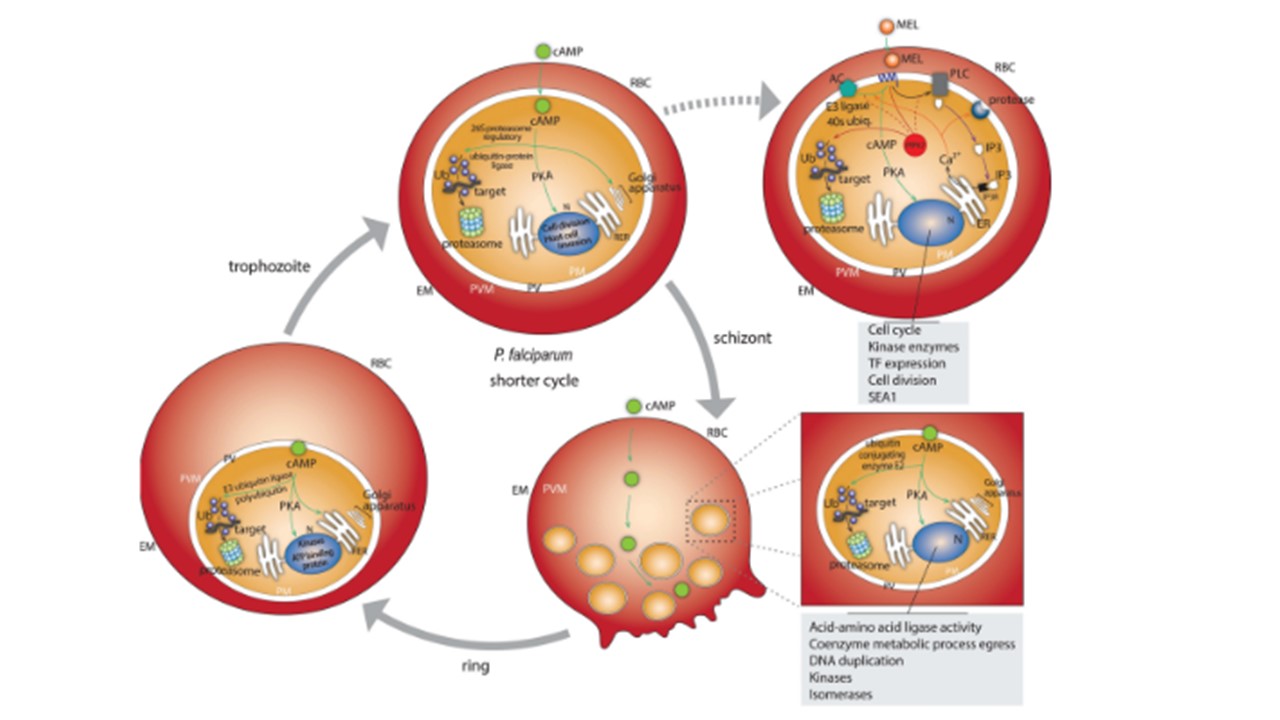P. falciparum is able to sense the physiological environment through melatonin (MEL) and cAMP and in response to these molecules can change its cell cycle. The charge illustrates the modulation of transcripts after MEL and cAMP treatment. RNA-Seq analysis at ring (6 h), trophozoite (34 h) and schizont (44 h) was carried out. In trophozoites forms treated with cAMP was observed a positive transcripts regulation of 26S proteasome regulatory and ubiquitin-protein ligase was involved in ubiquitination events and consequently in the degradation of target proteins by the proteasome. The cAMP internalization promotes, probably via PKA signaling, increased the expression of transcripts related to cell division and host cell division. Nevertheless, RNA-Seq showed an augmentation of mRNA expression involved in acid-amino acid ligases, coenzyme metabolic process egress, DNA duplication, kinases and isomerases. Transcript of ubiquitin conjugating enzyme E2 was also modulated. On ring stage, cAMP stimulates, via PKA signaling, the transcription of E3 ubiquitin ligase and poliubiquitin, and directly decreased transcripts level of kinases and ATP-binding protein. In parallel, MEL treatment of trophozoite forms causes the activation of UPS increasing E3 ligase and 40S ubiquitin transcripts levels. Activation of cyclase adenylate (AC) leads crosstalk with cAMP and PKA signaling and promotes an elevation of the mRNA level associated with cell cycle, kinases enzymes, transcription factor expression, cell division, and SEA1. In response to MEL, calcium release is activated by PLC and IP3, consequently, Ca2+ release can activate UPS and proteases. In addition, MEL treatment can reach UPS through PK7 protein and crosstalk between cAMP and PLC can be established.
Parreira KS, Scarpelli P, Rezende Lima W, Garcia CRS. Contribution of Transcriptome to Elucidate the Biology of Plasmodium spp. Curr Top Med Chem. 2022;22(3):169-187. PMID: 35021974.
0
